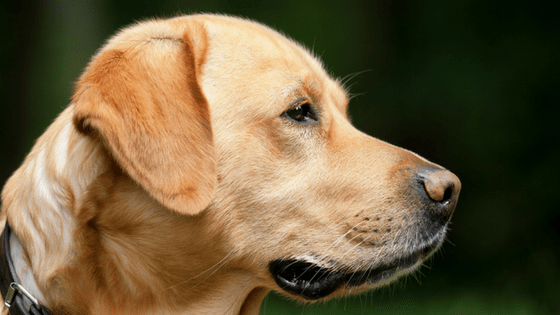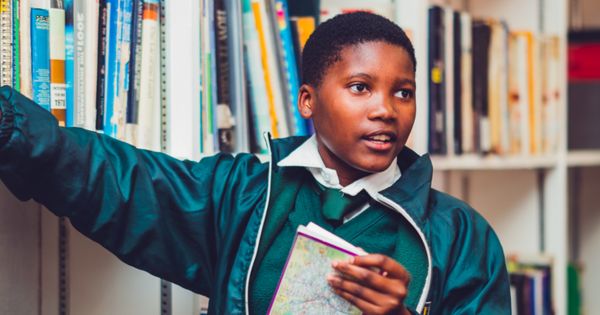If you and your partner are thinking about adding a furry, four-legged companion to the family, then read this first.
Every parent with a child over the age of five will inevitably come across the question, “Can we get a pet?” Usually, it’s followed up by “Pretty pretty please please please please…” or “I really need one…!”
And while some of the greatest moments in life include the day a puppy or dog becomes a member of your family, it takes some time to figure out whether or not your family dynamic is ready for such a commitment.
Before your child wears you down with their own version of puppy-dog eyes and their persistent begging, here are several key factors to consider.

1. How old are your children?
If this is your first family pet, age will play an important role. Children of all ages should be supervised when interacting with new pets, particularly dogs. And if a child is too young, they may not understand what are considered safe and appropriate interactions with the new family pet.
This can lead to accidental injuries incurred by both the child and the pet in question.
If this is your first pet and your family dynamic includes an infant or toddler and older children, consider starting off with a shelf pet, like a fish. This encourages children to embrace their curiosity while preventing the possibility of harm to all parties involved.
Children of older age groups (ages five and up) understand some of the expectations surrounding dog ownership and can grasp some of the responsibilities associated with owning a dog, like feeding and walking the dog. At this age group, children should be tasked with some responsibilities, like exercising the dog, to provide enriching interactions.
2. Have you done your research?
Before considering if your family is ready for its first dog, have a serious talk about the implications and responsibilities regarding dog ownership. This includes determining if your family has the necessary lifestyle that can cater to the love and attention a family dog will need. After all, bringing a dog home is a lifetime commitment.
Different breeds will have different requirements. Three major factors should be considered when choosing the right breed for your family:
- Temperament
- Size
- Energy level
Some breeds are better suited for homes with kids than others. Some of the best dog breeds for families with kids include:
- Golden Retriever
- Bulldog
- Newfoundland
- Collie
- Vizsla
- Irish Setter
- Beagle
- Bull Terrier
- Poodle
- Labrador Retriever
Adding a dog to the family dynamic will impact your family for years to come. Have serious discussions before meeting a breeder or a shelter to determine if your family is ready. Remember, kids should be involved in the discussion and decision-making process.
If they show little to no interest in being involved in the discussions, that may be a sign that they’re not yet ready for the responsibilities associated with owning a dog.

3. Can you afford to own a dog?
Besides the obvious costs of dog ownership — for food, toys, dog accessories (pet ID, suitable collars and leads, bedding, etc.), and annual veterinary appointments — your budget should factor in unexpected costs as well. Depending on the breed, these unexpected costs may include grooming, travel and accommodation costs, dog walking services, and emergency vet appointments.
Be careful not to underestimate the cost of owning a dog over its full lifetime. This can severely impact your estimated pet budget and dip into savings that you weren’t ready to use. The average first-year costs to own a medium-sized dog, depending on its breed, is estimated to be around USD $500-$2,500.
And according to several experts, the lifetime cost of dog ownership is roughly around USD $30,000-$40,000, depending on the breed. To put that into perspective, the estimated average price for a new car sold in the U.S. is around $33,500.
4. Is your home conducive to owning a dog?
If this is your family’s first pet, it’s highly important that you and the rest of your family go through your home to source potential hazards that could put your new pet at risk.
Did you know that chocolates and baked goods sweetened with xylitol are dangerous for dogs? Several plants like azaleas and tulips are also toxic for dogs. If you have children in the house, their small toys can become choking hazards for dogs.
When it comes to the welfare of your new dog, the size of your house and its yard will be a determining factor. As a general rule, the larger the breed, the more space it will require to be comfortable. Large breed dogs crammed into a small space will become a hazard unto themselves, becoming prone to knocking over furniture.
If your family dwells in the city with limited to no yard space, consider the location of local dog parks to ensure that your new family dog’s exercise needs are met. Plus, bringing your new dog to a local dog park allows them to meet new friends, which can be an added bonus.

5. Is your family ready for change?
Kids can become obsessed with having a family pet. But once the novelty wears off, the responsibility of owning a dog may end up falling solely on your and your partner’s shoulders. While kids may lose interest in owning a dog over time, someone will still need to care for the animal.
A new dog can be a disruptive element to the family’s established routine. If your family cannot handle disruptions to its routine and structure, it may be best to wait for a time until there’s more room for flexibility in your family’s usual schedules.
Training will also need to be carried out immediately. Training a new dog, particularly a puppy, will take a lot of time and will require a lot of patience. If your family doesn’t have the time to cater and devote to a puppy’s needs, consider adopting an older dog through your local shelter. These older dogs will be house-trained and less active, minimizing the need to train and set boundaries.
Failing to discipline and train a new dog once they’re brought home can result in poor behavior that may be difficult to change. This can lead to a dangerous environment, especially when little humans are present.
Other things to consider
If your new family pet is a puppy, get them spayed or neutered. This will not only contribute to them living healthier and longer lives, but will also ensure that aggression problems are avoided.
Finally, consider outfitting your new family pet with a pet ID. If your dog decides to go on a solo adventure without leaving as much as a note, having your dog microchipped and outfitted with identification increases the return-to-owner rate. The essential information included in your pet’s ID tags should include your address, phone number, and your pet’s name.
About The Author
Farah Al-Khojai is the Managing Partner of Pet’s Delight. A passionate entrepreneur, Farah holds a Bsc in Government from the London School of Economics. She is always on the lookout for new opportunities to develop and grow the pet and equestrian retail and wholesale market in the UAE and beyond, and is proud to be at the helm of the first and the largest pet care provider in the market representing world-class brands including Orijen, Applaws, Hunter, Savic, Flamingo, Ruffwear and Rogz.
 Kaboutjie SA Mommy Blogs by Lynne Huysamen
Kaboutjie SA Mommy Blogs by Lynne Huysamen





Having pets is a huge responsibility we got our first dog before we had a child.
The temperament did state that his breed is stubborn, hard to tame, fussy little guys as well as attention seekers. At the time he was perfect and those breed characteristics we read about was overlooked by my husband and myself.
When we found out I was pregnant, that is when all these traits of the breed started to cause concern for us. Yes, our dog was spoilt just as much as I baby of a family was, he also had a bad attitude, used to be stubborn and only listened to me and nobody else.
Finally, the day arrived when we had to bring our baby home, on arrival my dog was excited to see me, it wasn’t immediately that he realised there was a baby in the house that was staying for good and not visiting.
To our amazement our dog became protective over the baby, every time he cried our dog used to run to him. My son had become a friend to him and unfortunately, he didn’t like anybody carrying my son, not even his grandparents. So we used to have to carry him first and lay him down then the baby and my dog used to still sit right next to whoever carried baby.
This is a strange bond, but it seemed as though I was replaced from being my dogs best friend.
Nice article. Thanks for sharing…my kiddo and Mr.Pup goes along pretty well..He is the bodyguard now…LOL
That is great news and yes dogs get very protective over the little ones don’t they?